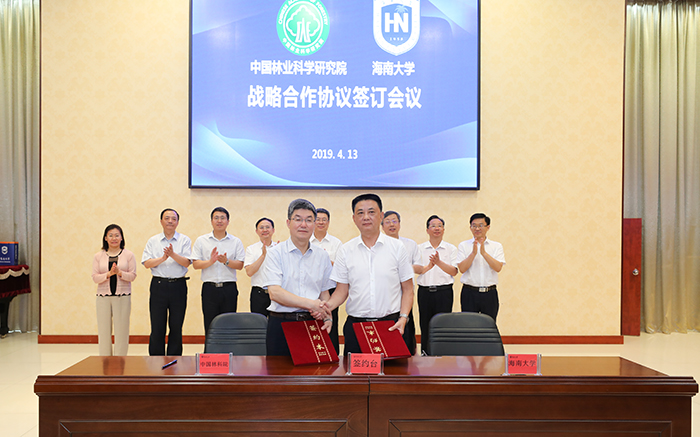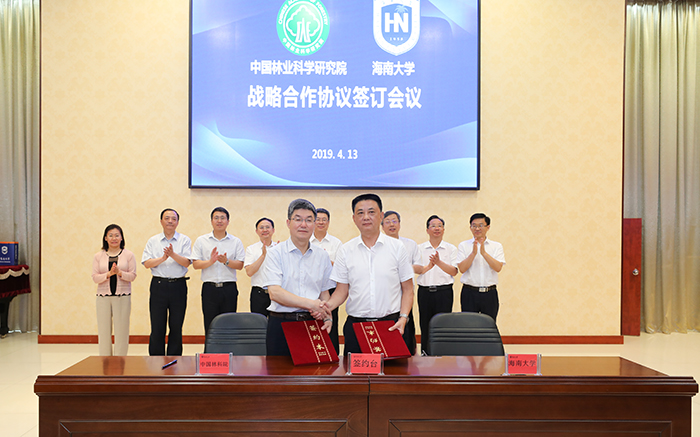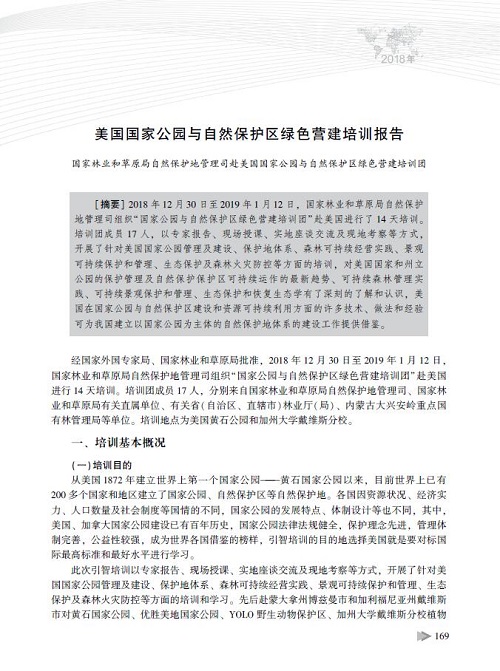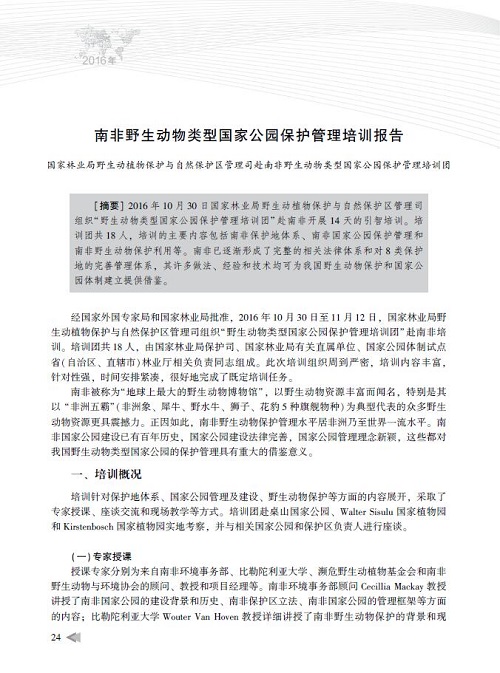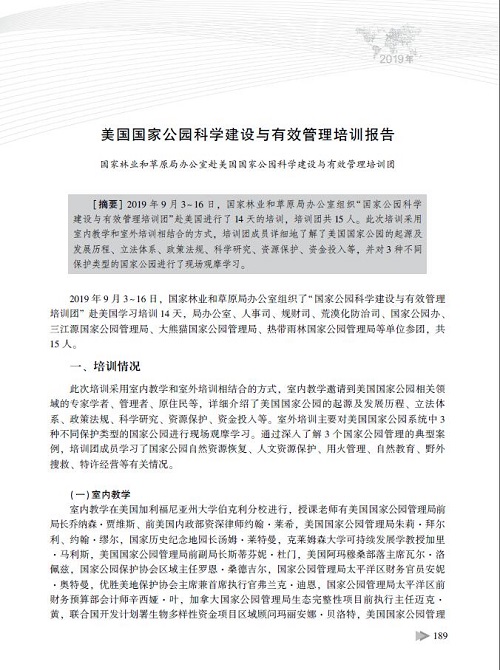
VERP理论在国家公园游憩管理中的应用及启示——以美国拱门国家公园为例
编号
lyqk009426


中文标题
VERP理论在国家公园游憩管理中的应用及启示——以美国拱门国家公园为例


作者单位
北京林业大学园林学院,北京 100083


期刊名称
世界林业研究


年份
2021


卷号
34


期号
1


栏目编号
1.0


栏目名称
专题论述


中文摘要
国家公园作为一种独特类型的自然保护地至今已历140余年,形成了相对完整的承载力管理体系,其中游客体验与资源保护理论(VERP理论)被认为是国家公园游憩管理中最具使用价值的工具之一。当前我国正致力于建设以国家公园为主体的自然保护地体系,VERP理论则为中国国家公园游憩管理提供了一个理性思路。文中梳理VERP理论相关内容,介绍美国拱门国家公园对VERP理论的应用实践,提出了适用于我国国家公园游憩管理的措施:明晰管理目标,坚持“自然环境”为主的监测体系,加强规划和管理“软硬实力”,提倡“国家主导、社会响应”式的科学研究,保障和提升监测管理水平。


基金项目
国家重点研发计划专题“乡村生态景观物种多样性维护技术研究”(2019YFD11004032)


英文标题
Application of VERP Theory to Recreation Management of National Park and Its Enlightenment: A Case Study of the Arches National Park


作者英文名
Wang Mengqiao, Wang Zhongjun


单位英文名
School of Landscape Architecture, Beijing Forestry University, Beijing 100083, China


英文摘要
National park has been regarded as a unique nature protected area for more than 140 years, and a relatively complete carrying capacity management system has been established for national parks. VERP theory is considered to be one of the most valuable tools in the national park recreation management. Currently, China is dedicated to the construction of natural protected area system with national park as the dominant part, and the VERP theory provides a reasonable thought for the management of recreation in national parks. This paper reviews the VERP theory and related contents, and introduces the practical application of VERP theory in the Arches National Park. On this basis, the suitable measures for national park recreation management in China is proposed that the management objectives should be specified to establish the nature environment oriented monitoring system, and the planning and management should be strengthened by adopting the scientific research featured with government leading and social response so as to guarantee and improve the monitoring management level.


英文关键词
VERP theory;recreation management;national park;carrying capacity


起始页码
25


截止页码
30


投稿时间
2020/3/29


最后修改时间
2020/8/10


作者简介
王梦桥,硕士研究生,主要研究方向为生态及遗产旅游,E-mail:571832933@qq.com


通讯作者介绍
王忠君,博士,副教授,主要研究方向为国家公园管理与游憩规划,E-mail:wangzj814@bjfu.edu.cn


E-mail
王忠君,wangzj814@bjfu.edu.cn


分类号
S759.91


DOI
10.13348/j.cnki.sjlyyj.2020.0082.y


参考文献
[1] HOF M, LIME D W. Visitor experience and resource protection framework in the National park system: rational, current status, and future direction[J]. Progress and Future Directions, 1997(6):371-374.
[2] LINDBERG K, MCCOOL S, STANKEY G. Rethinking carrying capacity[J]. Annals of Tourism Research, 1997, 24(2):461-465.
[3] MANNING R E, WANG B, VALLIERE W, et al. Research to estimate and manage carrying capacity of a tourist attraction: a study of Alcatraz Island[J]. Journal of Sustainable Tourism, 2002, 10(5):388-404.
[4] VALLIERE W, MANNING R E, BUDRUK M, et al. Transportation planning and social carrying capacity in the national parks[C]//VALLIERE W. Proceedings of the 2001 Northeastern Recreation Research Symposium. Newtown Square, PA: U. S. Department of Agriculture, Forest Service, Northeastern Research Station, 2002: 36-39.
[5] HALLO J C, MANNING R E. Analysis of the social carrying capacity of a national park scenic road[J]. International Journal of Sustainable Transportation, 2010, 4(2):75-94.
[6] MANNING R E, LEUNG Y F, BUDRUK M. Research to support management of visitor carrying capacity of Boston Harbor Islands[J]. Northeastern Naturalist, 2005, 12(3):201-220.
[7] CASTLEY J G, HILL W, PICKERING C M. Developing ecological indicators of visitor use of protected areas: a new integrated framework from Australia[J]. Australasian Journal of Environmental Management, 2009, 16(4):196-207.
[8] FARRELL T A, MARION J L. The protected area visitor impact management (PAVIM) framework: a simplified process for making management decisions[J]. Journal of Sustainable Tourism, 2002, 10(1):31-51.
[9] MANNING R E, VALLIERE W, ANDERSON L, et al. Defining, measuring, monitoring, and managing the sustainability of parks for outdoor recreation[J]. Journal of Park and Recreation Administration, 2011, 29(3):24-37.
[10] CERVENY LEE K, BLAHNA DALE J, STERN MARC J, et al. The use of recreation planning tools in U. S. Forest Service NEPA assessments[J]. Environmental Management, 2011, 48(3):644 -657.
[11] FEFERJ P. Visitor-use management in protected areas: understanding expert perceptions of the effectiveness and sustainability of applying the visitor experience and resource protection (VERP) framework for recreation planning[D]. Maine, USA: University of Maine, 2015.
[12] FEFER J P, DE URIOSTE-STONE S M, DAIGLE J, et al. Understanding the perceived effectiveness of applying the visitor experience and resource protection (VERP) framework for recreation planning: a multi-case study in U. S. national parks[J]. Qualitative Report, 2018, 23(7):1561-1582.
[13] National Park Service. The visitor experience and resource protection (VERP)framework, a handbook for planners and managers[R]. Washington DC: National Park Service, 1997.
[14] MANNING R E. Parks and carrying capacity: commons without tragedy[M]. Washington, USA: Island Press, 2007.
[15] HOF M, HAMMETT J, REES M, et al. Getting a handle on visitor carrying capacity: a pilot project at Arches National Park[J]. Park Science, 1994, 14(1):11-13.
[16] MANNING R E, FREIMUND W A, LIME D W, et al. Crowding norms at front country sites: a visual approach to setting standards of quality[J]. Leisure Sciences, 1996, 18(1):39-59.
[17] MANNING R E, LIME D W, HOF M. Social carrying capacity of natural areas: theory and application in the US national parks[J]. Natural Areas Journal, 1996, 16(2):118-127.
[18] MANNING R E. Visitor experience and resource protection: a framework for managing the carrying capacity of national parks[J]. Journal of Park and Recreation Administration, 2001, 19(1):93-108.


发布日期
2020-08-19


PDF全文
浏览全文


-
相关记录
更多
- 自然教育发展现状与展望——以青海省为例 2023
- 法国国家公园品牌增值体系建设过程及特征分析 2022
- 国家公园社区治理国际经验及启示 2022
- 美国国家公园系统户外运动发展现状、经验省思与本土启示 2022
- 中国国家公园自然教育功能提升路径——基于国外的启示与经验借鉴 2022
- 中国国家公园理念的源流与创新 2022
 打印
打印
